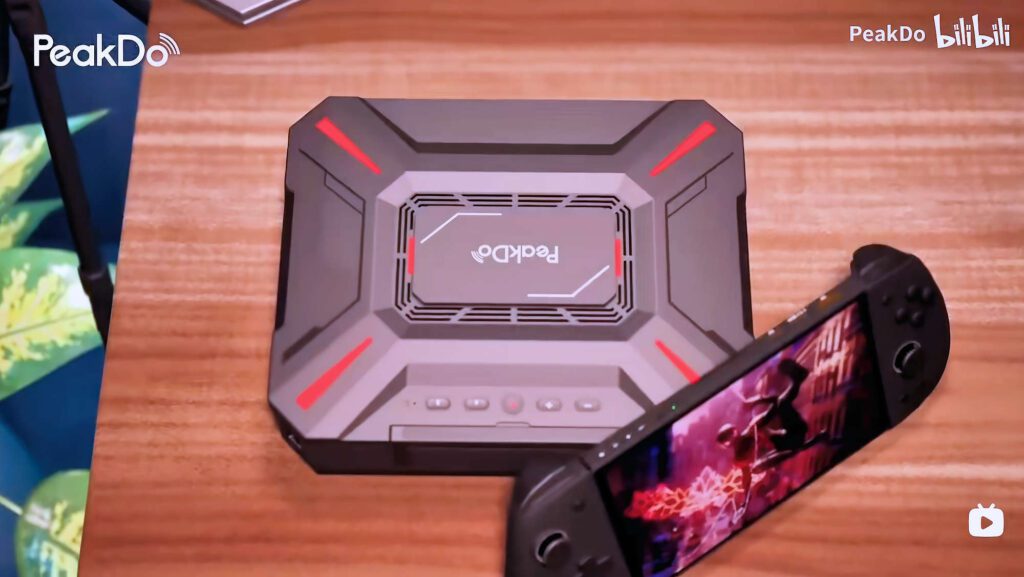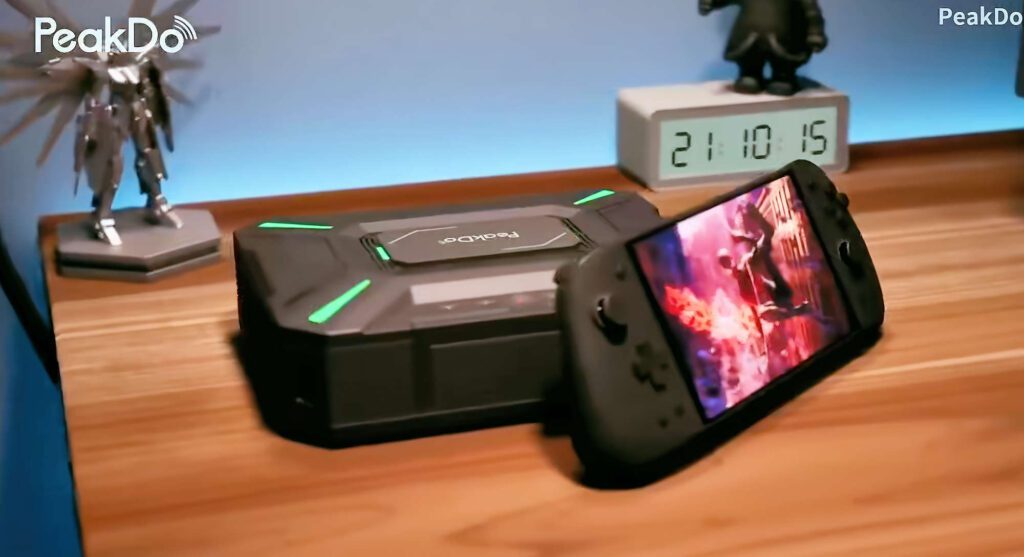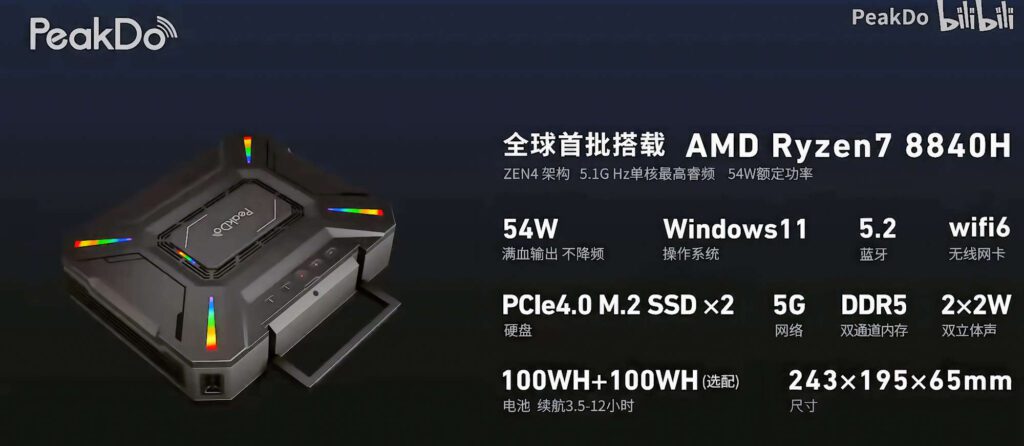Exclusive Sony Remote Player Application Now Available for Windows Users
PeakDo, a trailblazer in Chinese technology, is offering a sneak peek at its newest portable gaming device, a design that cleverly echoes the specifications of the AMD Ryzen 7 7840U/Ryzen Z1 APUs. The gadget’s unique selling point, however, lies in its similarity to the functionality of the Sony PlayStation’s Remote Player system. This innovative tool is essentially a gaming screen paired with controllers, engineered to receive data directly from a primary device situated nearby.
This game-changing handheld device takes an alternative route by not drawing on its internal processor for gaming. Instead, it partners with an external piece of hardware to stream games, mirroring content effortlessly. This method might introduce a slight increase in latency, but PeakDo counters this effectively by utilizing Millimeter Wave (MMWave) connectivity, which is known for its rapid transmission, similar to Wi-Fi, but it’s anticipated that PeakDo will deploy a unique frequency range tailored for this device’s optimal performance.


The upcoming gaming handheld from PeakDo is engineered with an impressive internal 100Wh battery, and it offers the possibility to enhance this capacity with an additional 100Wh unit. This feature stands out especially since the industry standard for portable laptops currently restricts batteries to 99.9Wh to comply with air travel lithium-ion regulations. In terms of storage, the device boasts the capability to upgrade, supporting dual PCIe Gen4 expansion slots. Connectivity is advanced as well, with the inclusion of 5G, Wi-Fi 6, and Bluetooth 5.2, ensuring high-speed, low-latency, and reliable connections for gamers on the go.


PeakDo’s latest gaming device is a powerhouse, boasting an AMD Ryzen 7 8840H APU with a thermal design power (TDP) of 54W, typically seen in bulkier handheld consoles that require robust cooling solutions. In this innovative design, the cooling is managed externally, which is a game-changer for portable gaming.
The design philosophy of PeakDo’s device suggests that it is meant to be used as a combined unit, with the screen and streaming device carried together, rather than as a standalone handheld console. This approach echoes the concept of VR gaming backpacks introduced by ZOTAC, prioritizing a complete system that’s carried on the user’s person.
While this might shift away from the traditional concept of handheld portability, PeakDo is on track to present a fully operational model of this device by March of this year, aligning with the anticipated launch date and showcasing their commitment to innovation in gaming mobility.



